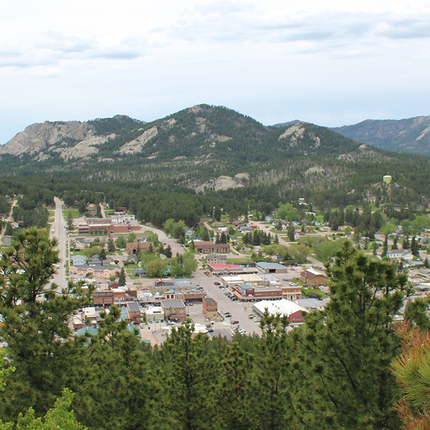Reliable internet has become a necessity.
“People living in rural areas aren’t using the internet to play video games. This is our life,” said Doug Riediger.
Doug, a farmer living near Wakonda, South Dakota, recently participated in the Center for Rural Affairs’ South Dakota Broadband Survey, which was done in an effort to learn more about residents’ broadband access and digital skills.
Broadband access is an essential component in allowing rural communities to thrive. But, for many South Dakotans, and rural Americans, broadband access continues to be a challenge. In 2021, state officials estimated that 135,000 people—or one in six South Dakotans—lack adequate broadband access. Additionally, according to research by Broadband Now, the state has the second slowest internet speed in the nation and ranks 37th overall in access.
One hundred South Dakotans participated in the Center’s survey, allowing us to hear directly from residents and gain insight into where resources are needed. Of those surveyed:
- 33% said their current broadband meets their needs.
- 25% said they use their cell phones for their primary internet source.
- 70% said they use their broadband for office use, and more than half use it for business purposes; 35% use their internet connection for health care.
When asked to choose the top three most important issues to them, 60% said faster internet speed, 52% said lower cost of internet service, and 50% said more reliable internet service.
Lack of adequate broadband can have a significant economic impact, said Robert Lowery, chairman of the Hill City Economic Development Corporation.
“In talking to businesses up and down Main Street, lack of broadband and cell service is absolutely the No. 1 issue,” he said. “When developers look to come here, the very first question is, ‘What can you do about internet and cell service?”
Reliable internet is also a concern for those wanting to relocate or return to rural communities, many of whom depend on reliable internet for work. In 2021, the United Van Lines Annual Movers Study ranked South Dakota as the No. 2 state for inbound migration.
“We’ve lived in cities all of our lives and moving to Custer has led us to understand some of the challenges rural people face,” a survey respondent from Custer, South Dakota, said. “Our internet provider said to check back every spring for the next seven years and eventually we’ll get broadband to our home.”
Investments in this critical infrastructure will help ensure rural communities continue to be great places to live and work.
More on broadband access in the state will be published in the South Dakota Broadband Resource Guide, set to be released early this summer.
Photo of Custer, South Dakota, by Rhea Landholm




